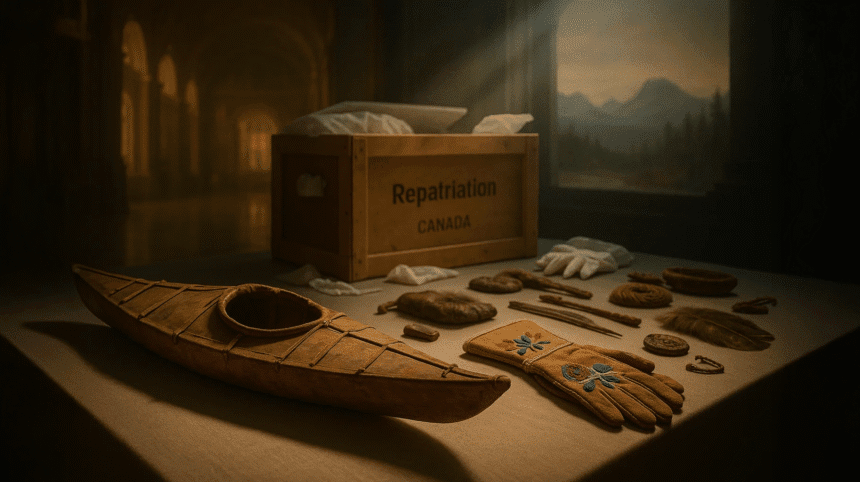Nearly a century later, the Vatican has returned 62 Indigenous artefacts to Canada, after they were taken to Rome for display in a missionary museum. The items were handed over by Pope Leo XIV on Saturday to the Canadian Conference of Catholic Bishops (CCCB), which intends to restore them to their original communities.
The repatriation follows Pope Francis’ 2022 “penitential pilgrimage” across Canada, during which he apologized to First Nations leaders for the Catholic Church’s role in residential schools and the suppression of Indigenous identity. The return of these items represents a tangible step toward reconciliation.
A joint statement from the Vatican and CCCB emphasized that the gesture is intended as “a concrete sign of dialogue, respect and fraternity,” noting that the artefacts “bear witness to the history of the encounter between faith and the cultures of the Indigenous peoples.”
The items originate from various Indigenous communities across Canada and were sent to Rome by missionaries for a 1925 exhibition that showcased over 100,000 objects. Among the artefacts being returned are an Inuit kayak historically used for whale hunting in Canada’s far north and a set of intricately embroidered gloves from the Cree Nation.
Currently stored in Rome, the artefacts are scheduled to be flown back to Canada on 6 December. The CCCB plans to transfer them to Canada’s National Indigenous Organizations, which will oversee their return to the original communities. Tribal groups have prepaid the cost of repatriation and intend to hold ceremonies to mark the return before the artefacts are officially restored.
Canadian Foreign Minister praised the repatriation, calling it “an important step that honours the diverse cultural heritage of Indigenous peoples and supports ongoing efforts toward truth, justice, and reconciliation.”
The items had been housed in the Vatican Museum’s ethnographic collection known as the Anima Mundi museum. While the Church has described the artefacts as “gifts” from tribal leaders, critics have challenged this characterization, citing historical power imbalances at the time of transfer. Many of the objects were removed during a period when Indigenous spiritual practices were restricted by both Canadian law and Catholic edicts, highlighting the cultural and historical significance of their return.
The Vatican’s decision to return these artefacts reflects a growing global effort to recognize Indigenous rights, cultural heritage, and the importance of restoring items removed under colonial and missionary contexts.

















